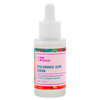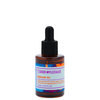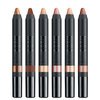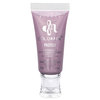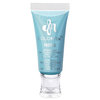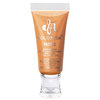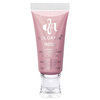
These days, so many Beauties are sporting ink masterpieces. But keeping the artwork fresh means treating the area with extra TLC. Even if you want to cover or remove an old design, it’s important to understand how treatments and products could effect your surface. We chatted with New York City-based dermatologist Jeannette Graf M.D., about the steps you can take to ensure your beautiful ink doesn't turn into a messy mistake.
LOVE IT!
After you’ve been freshly inked, it’s important to take care of the skin for proper healing. "A good tattoo artist will give proper post-procedure instructions, but you’re usually instructed to remove your bandage after a few hours and apply antibiotic ointment." explains Dr. Graf. Be sure to leave the bandage on for at least two hours and then wash the area. "Use your hand to clean the area with a mild, unscented antibacterial soap and water—avoid rubbing the skin dry and pat gently instead," says Dr. Graf. Next, apply a thick coat of vitamin A and D enriched ointment, which will keep the surface moist and protect against infection. After about a week, you can switch to a dye-free, fragrance-free lotion such as Lubriderm or Eucerin. Since you shouldn’t completely submerge your ink in water, avoid baths and swimming pools and stick to showers for two to three weeks. Another important tip? "Wear loose-fitting, soft clothing to avoid rubbing and irritation," says Dr. Graf. Avoid elastics, which can pull and spread the fresh ink.
When you first get a tattoo you’ll notice the skin will begin to flake, peel, and maybe even scab. Do not scratch or pick! This is a normal part of the healing process and will only last a few days. Try to avoid direct sun-exposure for two weeks after getting your new tattoo because the UV rays can fade your new ink. After the initial 14-day shade-a-thon, always apply at least an SPF 30 when you are out and about.
LOATHE IT!
Tattoos are meant to be permanent, so saying buh-bye to your body art isn't a painless process. Tattoos get dull and fade over time on their own but they do not disappear so you need to consider removal options. "Fade creams are unlikely to work and if you’re serious about having a tattoo removed, then laser option is your best bet," advises Dr. Graf. "Before laser was available dermatologists used dermabrasion to slough off the color—unfortunately it left severe scarring. The best options for your skin today are the Q-switched ruby and Nd YAG lasers.” Just like sun rays can fade your tattoo, these laser emit wavelengths of light in short pulses that deconstruct the pigment with low risk of scarring. But be warned: Each zap is unpleasant and the sessions can be pricey as more than one treatment is usually needed. If you’re looking for a less drastic daily alternative, there are a number of camouflage makeups which can mask tattoos well. "The formulas are waterproof, making them perfect options for swimming and sweating," says Dr. Graf, who recommends Covermark and Dermablend products.

Recognized as one the most distinguished dermatologists in the country, Dr. Graf is well known for her lifestyle and nutritional approach to skin care. A former fellow of NIH, Dr. Graf is consistently featured in national publications and scientific journals for her dermatology, skin science and anti-aging expertise. She is the author of the best-selling book, Stop Aging, Start Living, in which she recognizes the impact of pH balance on the way we look and feel.



 Recognized as one the most distinguished dermatologists in the country, Dr. Graf is well known for her lifestyle and nutritional approach to skin care. A former fellow of NIH, Dr. Graf is consistently featured in national publications and scientific journals for her dermatology, skin science and anti-aging expertise. She is the author of the best-selling book, Stop Aging, Start Living, in which she recognizes the impact of pH balance on the way we look and feel.
Recognized as one the most distinguished dermatologists in the country, Dr. Graf is well known for her lifestyle and nutritional approach to skin care. A former fellow of NIH, Dr. Graf is consistently featured in national publications and scientific journals for her dermatology, skin science and anti-aging expertise. She is the author of the best-selling book, Stop Aging, Start Living, in which she recognizes the impact of pH balance on the way we look and feel. 


